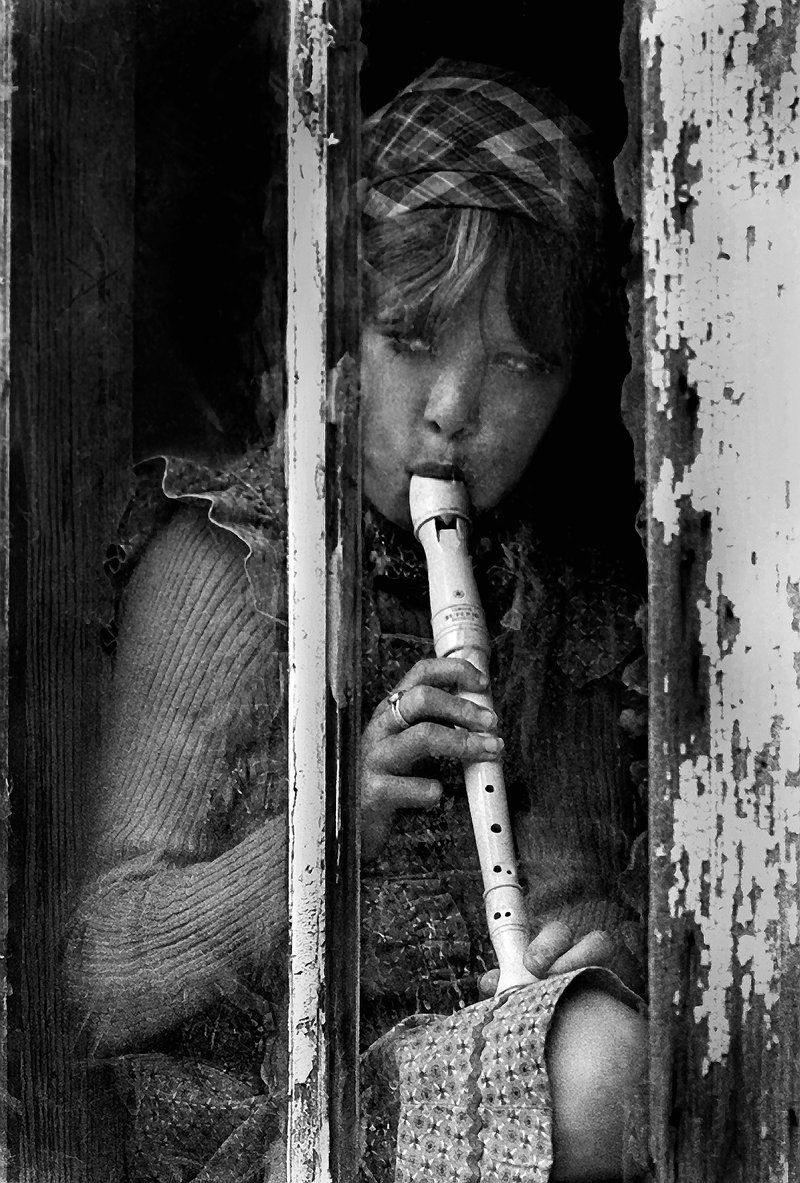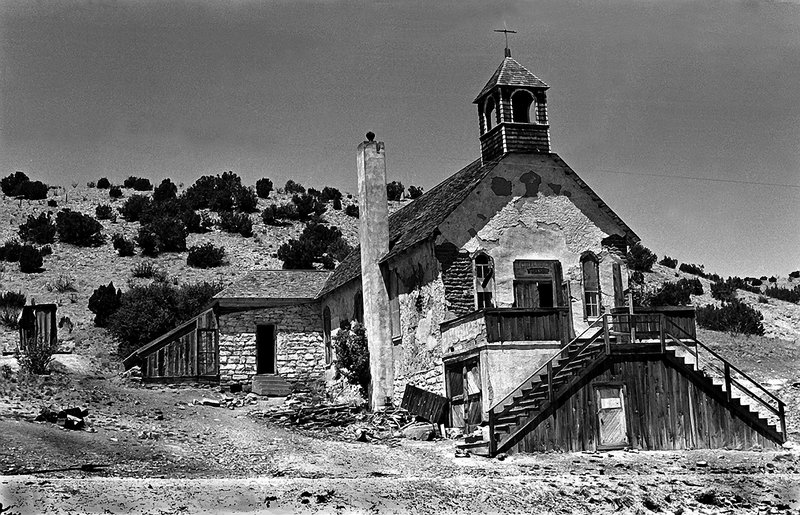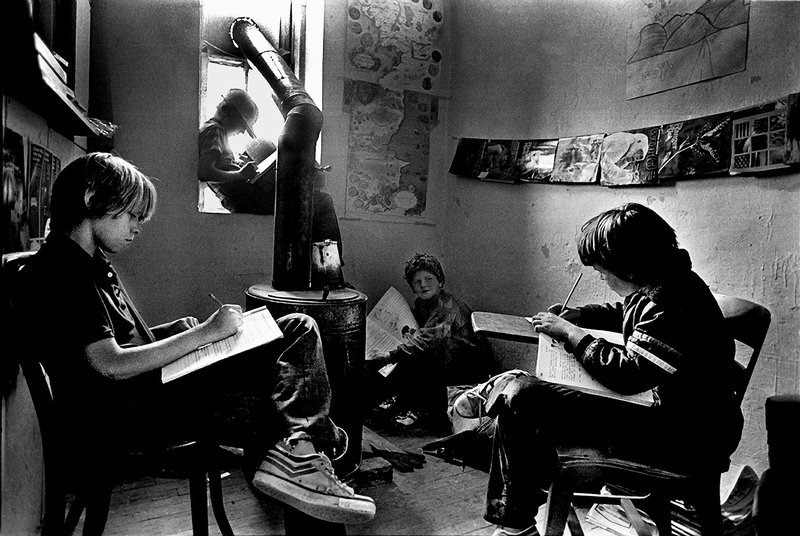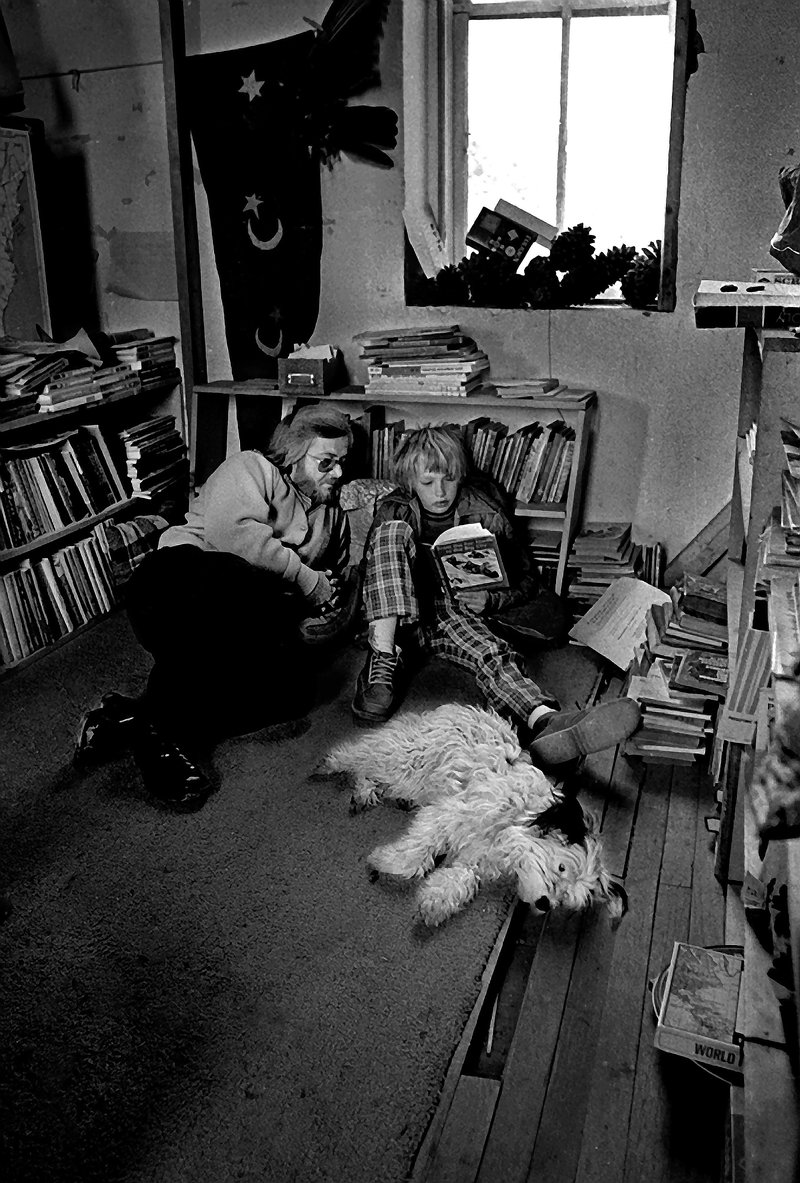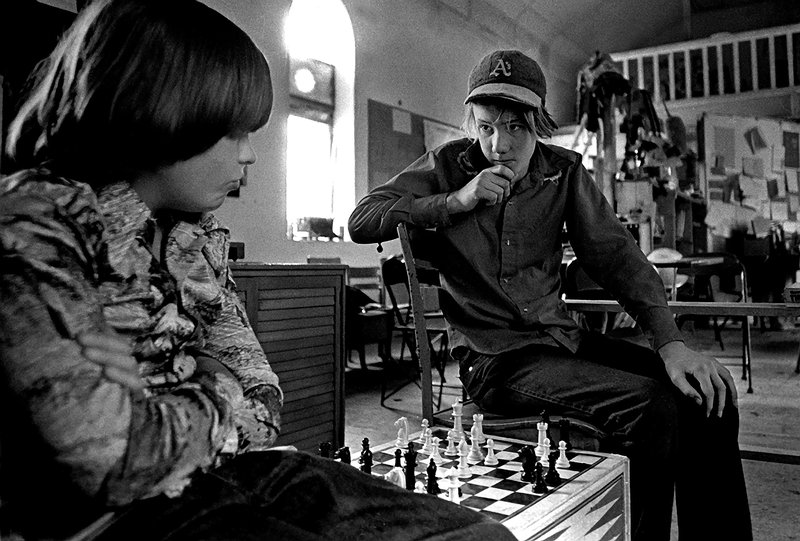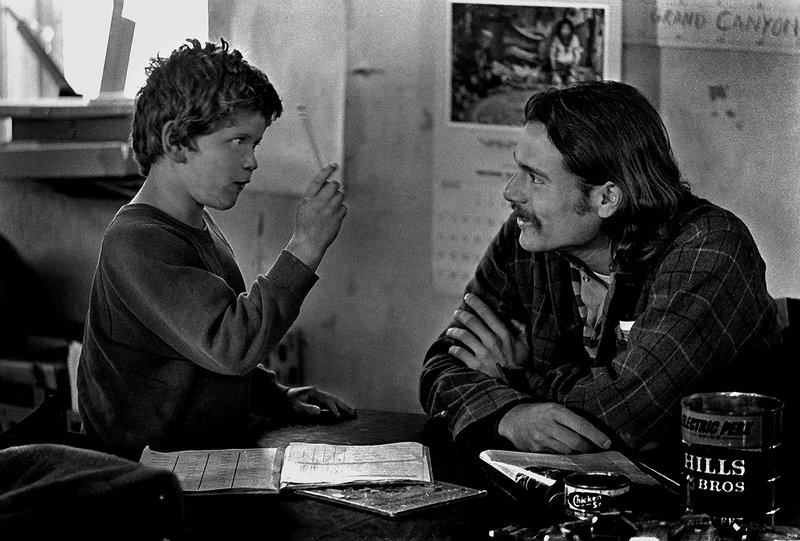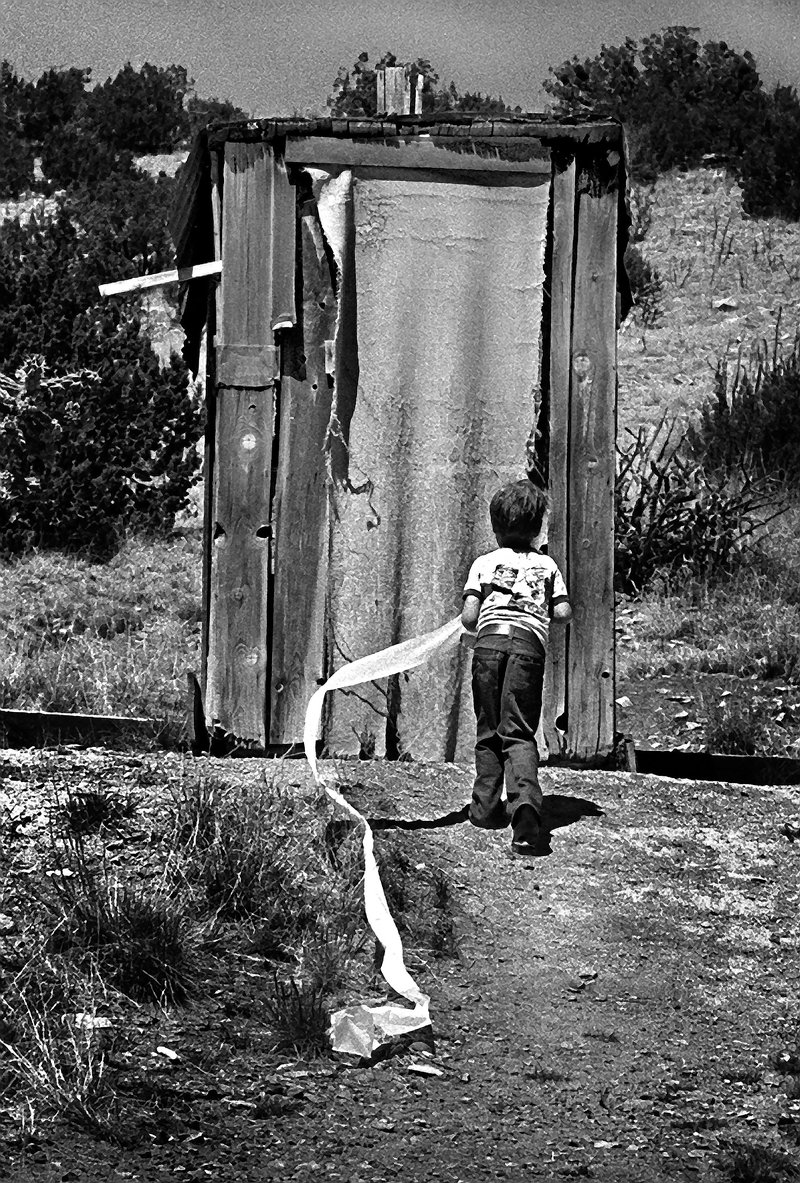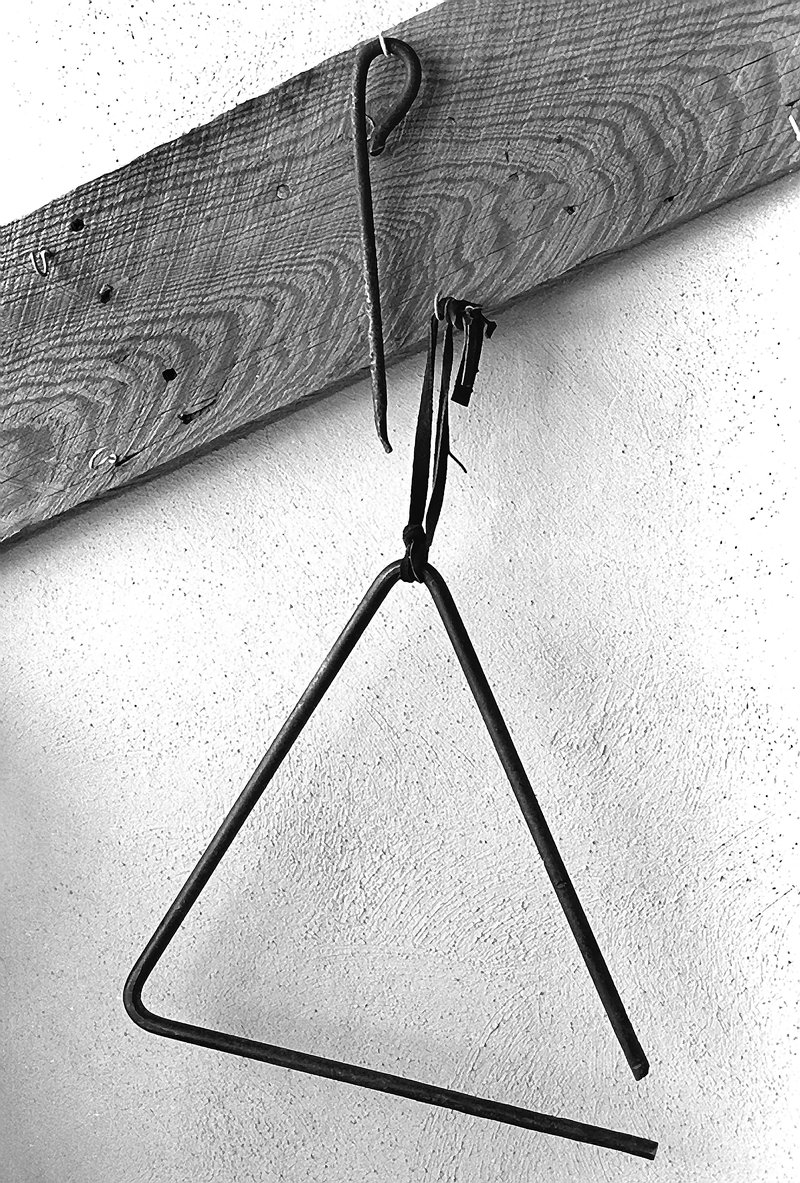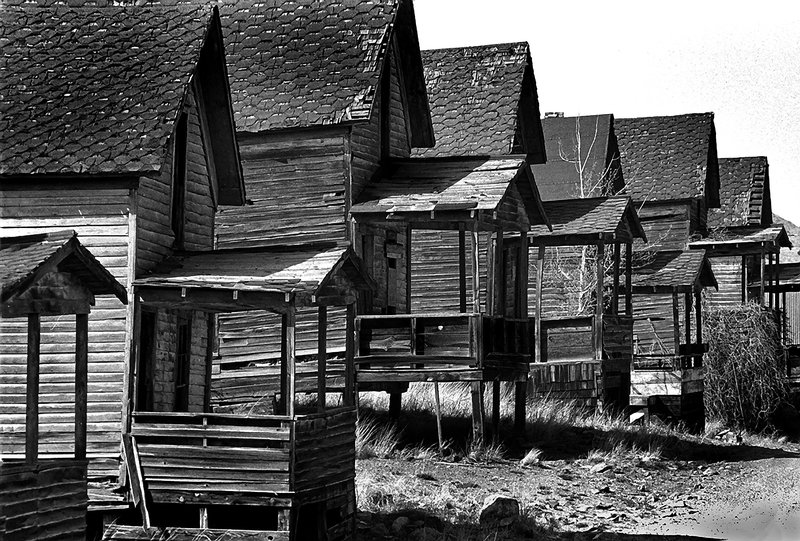Rick Rickman: Madrid, New Mexico - Community School
Madrid, New Mexico once was a thriving mining and lumber town but fell on hard times and lack of money and became semi-deserted. In the 80s Madrid became a destination for the hippie lifestyle and an eclectic mix of personality types. A young girl plays the recorder in the window and the old church that was converted to a one room school house.
Rick Rickman
Madrid, New Mexico
Chasing Out The Ghosts
By Rick Rickman
Madrid, New Mexico, celebrated its founding in 1895 and soon became a bustling hub due to its coal mines. Nestled in a narrow canyon of the Ortiz Mountains, Madrid was home to one of the most productive coal mines in the West. The town’s growth was driven almost exclusively by the Cerrillos Coal Company, which owned most of the town and its infrastructure. The company even established its own railroad spur, allowing coal cars to be loaded continuously throughout the day.
Madrid's prosperity extended beyond industry. The town boasted a semi-pro baseball team called the "Miners," who played in one of the first lighted ballparks west of the Mississippi. By the mid-1920s, they had won several pennants, a source of pride for the thriving community. To accommodate the growing workforce, prefabricated wooden miners' cabins were transported in from Topeka, Kansas, providing homes for the mining staff.
However, as coal lost favor to cleaner energy sources like natural gas and diesel fuel, Madrid’s prosperity quickly declined. By the mid-20th century, its once vibrant populace dwindled to fewer than 30 residents, leaving the town to decay into what many viewed as a ghost town. Various attempts to sell the property failed, and the town’s infrastructure began to crumble as time passed.
By 1975, a new chapter in Madrid’s history began when a group of people, who could be considered alternative lifestyle advocates, arrived. These homesteaders brought new life to Madrid, and some even started families. As their children grew, the need for education became apparent, leading to the establishment of a unique community-driven school called the “Children’s Workshop”.
The school, created inside Madrid’s old church, became a symbol of the town's revival. This was before the modern home-schooling movement gained traction, and the school was a truly collaborative effort among the homesteaders. Each family played a role in educating the children, fostering an environment of community and connection. With only 11 students, it was reminiscent of the one-room schoolhouses of earlier American history, where pupils learned not only from their teachers but also from each other.
Subjects like music, mathematics, history, English, writing, and reading were taught alongside life skills. The school’s only heat source was an old wood-burning stove, around which the students gathered on chilly mornings to complete their schoolwork. Pets were often part of the classroom atmosphere, and recess frequently involved students of different ages challenging each other to games like chess, further promoting learning through play.
The relationships between students and teachers were filled with joy and positivity, embodying the idea that education should be fun. Many education experts agree that this approach can create a successful learning environment, and it seems this was the case in Madrid’s little school. The only challenge the school faced was its primitive bathroom—an old, shaky outhouse. Yet despite the humble conditions, the Children’s Workshop appeared to nurture well-adjusted, happy students, adding a new chapter of resilience and community spirit to Madrid’s evolving story.

